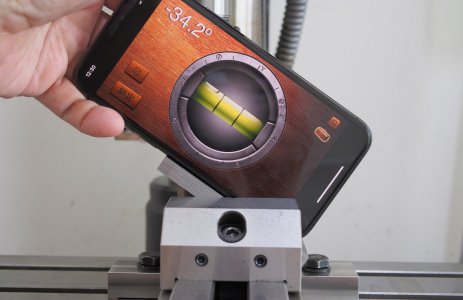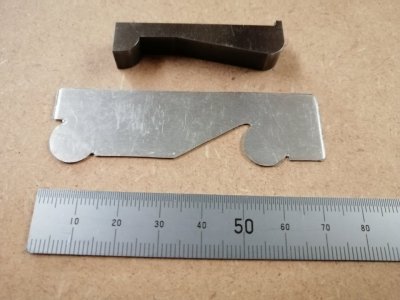- Joined
- Feb 1, 2015
- Messages
- 9,623
You can set the required angle by machining a piece of scrap to the desired thickness. It takes a little longer to set up but is just as effective.The sine bar does need a set of gauge blocks, something on my list, but not yet in my tool cabinet.
Adjustable parallels will also work.




